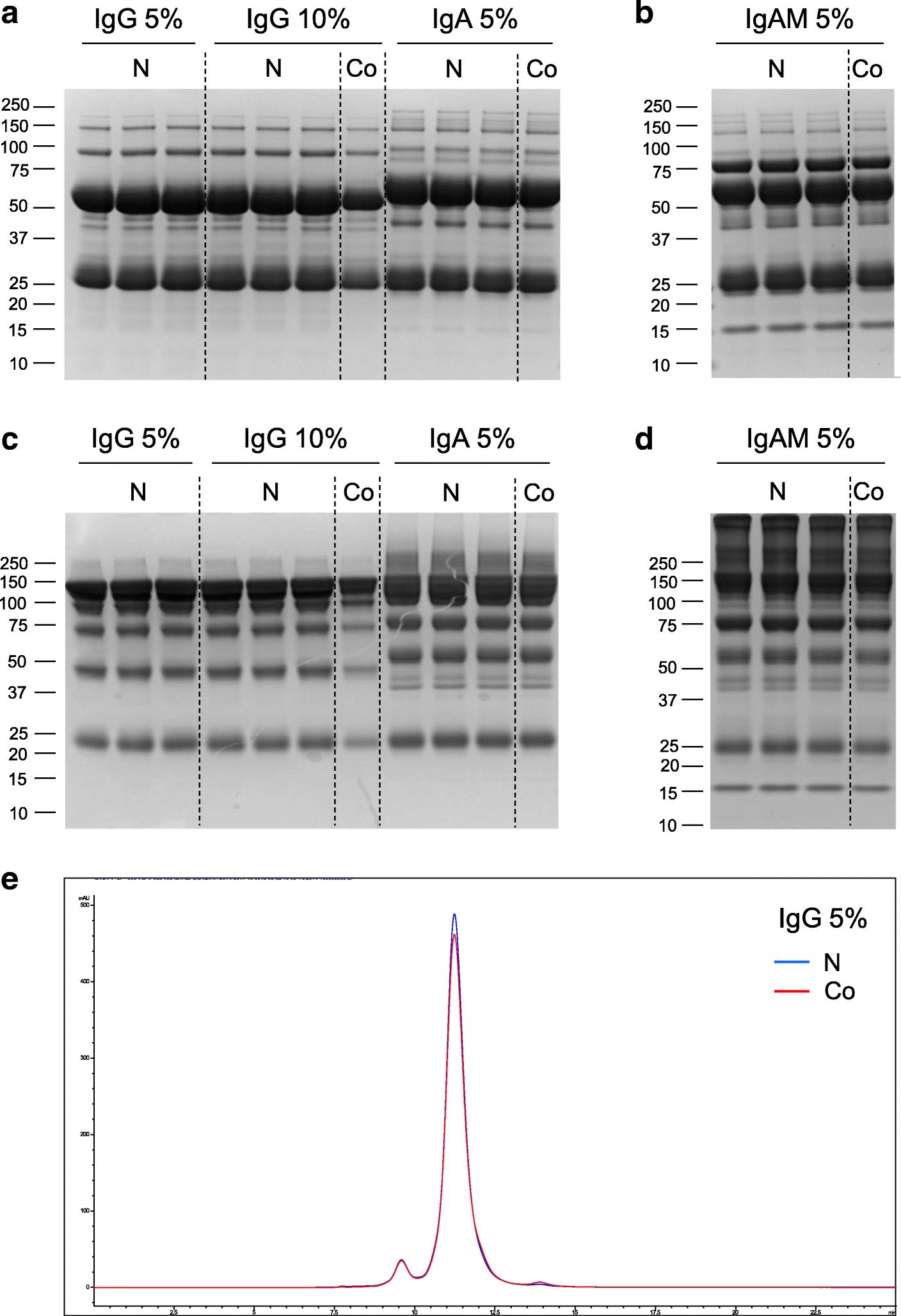- Respiratory Research
- Research
- Open Access
Respiratory Research201920:99
Abstract
Background
Recurrent and persistent infections are known to affect airways of patients with Primary Immunodeficiency despite appropriate replacement immunoglobulin serum levels. Interestingly, patients with Chronic Obstructive Pulmonary Disease or with non-CF bronchiectasis also show similar susceptibility to such infections. This may be due to the limited availability of immunoglobulins from the systemic circulation in the conductive airways, resulting in local immunodeficiency. Topical application of nebulized plasma-derived immunoglobulins may represent a means to address this deficiency. In this study, we assessed the feasibility of nebulizing plasma-derived immunoglobulins and delivering them into the airways of rats and non-human primates.
Methods
Distinct human plasma-derived immunoglobulin isotype preparations were nebulized with an investigational eFlow® nebulizer and analyzed in vitro or deposited into animals. Biochemical and immunohistological analysis of nebulized immunoglobulins were then performed. Lastly, efficacy of topically applied human plasma-derived immunoglobulins was assessed in an acute Streptococcus pneumoniae respiratory infection in mice.
Results
 Characteristics of the resulting aerosols were comparable between preparations, even when using solutions with elevated viscosity. Neither the structural integrity nor the biological function of nebulized immunoglobulins were compromised by the nebulization process. In animal studies, immunoglobulins levels were assessed in plasma, broncho-alveolar lavages (BAL) and on lung sections of rats and non-human primates in samples collected up to 72 h following application. Nebulized immunoglobulins were detectable over 48 h in the BAL samples and up to 72 h on lung sections. Immunoglobulins recovered from BAL fluid up to 24 h after inhalation remained structurally and functionally intact. Importantly, topical application of human plasma-derived immunoglobulin G into the airways of mice offered significant protection against acute pneumococcal pneumonia.
Characteristics of the resulting aerosols were comparable between preparations, even when using solutions with elevated viscosity. Neither the structural integrity nor the biological function of nebulized immunoglobulins were compromised by the nebulization process. In animal studies, immunoglobulins levels were assessed in plasma, broncho-alveolar lavages (BAL) and on lung sections of rats and non-human primates in samples collected up to 72 h following application. Nebulized immunoglobulins were detectable over 48 h in the BAL samples and up to 72 h on lung sections. Immunoglobulins recovered from BAL fluid up to 24 h after inhalation remained structurally and functionally intact. Importantly, topical application of human plasma-derived immunoglobulin G into the airways of mice offered significant protection against acute pneumococcal pneumonia.
Conclusion
Taken together our data demonstrate the feasibility of topically applying plasma-derived immunoglobulins into the lungs using a nebulized liquid formulation. Moreover, topically administered human plasma-derived immunoglobulins prevented acute respiratory infection.
No comments:
Post a Comment